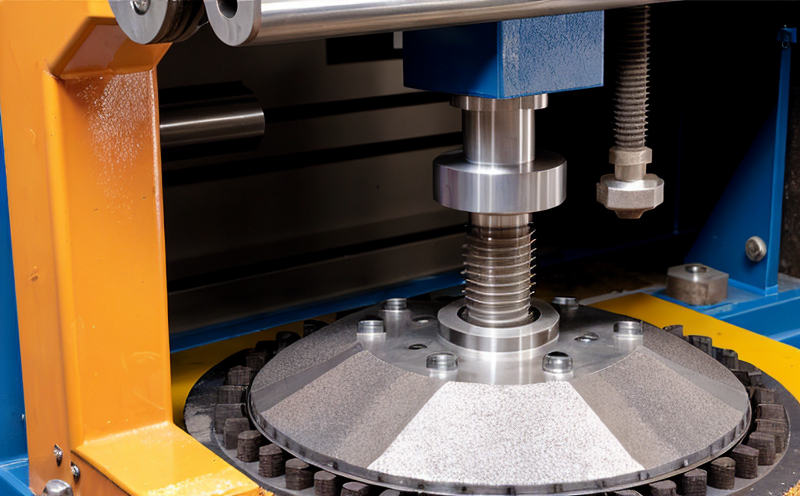ISO 20816-4 Vibration Severity for Motors
The ISO 20816-4 standard provides a detailed framework for vibration severity testing of motors. This method is essential in ensuring the mechanical reliability and durability of motor equipment, which plays a critical role in HVAC systems. The standard defines the acceptable limits of vibration that are likely to cause failure or degradation of the motor components over time.
Understanding ISO 20816-4 involves comprehending its scope, which includes various types of motors used in industrial and commercial settings. These motors can vary widely in size, power output, and application-specific requirements. The standard is designed to provide a harmonized approach that ensures consistent performance across different motor types and operating conditions.
The testing procedure outlined in ISO 20816-4 involves subjecting the motor to specific vibration levels while it operates under defined loading and speed conditions. This testing helps identify potential issues such as excessive wear, resonance, or mechanical instability before they lead to failure. The process typically includes:
- Installation of accelerometers on key areas of the motor.
- Application of a sinusoidal signal at various frequency bands to simulate real-world operating conditions.
- Measurement and recording of peak vibration levels for each band.
The results are then compared against the limits specified in ISO 20816-4, which take into account factors such as motor type, power rating, and environmental conditions. Compliance with these limits ensures that the motor will operate reliably within its intended lifespan without undue stress or strain on its components.
By adhering to this standard, manufacturers can improve product quality by identifying design flaws early in the development process. This not only enhances the longevity of the equipment but also reduces maintenance costs and potential downtime. Additionally, regular vibration testing helps maintain optimal performance throughout the motor's lifecycle.
The importance of ISO 20816-4 extends beyond just manufacturing; it is crucial for quality assurance teams who must ensure that all products meet industry standards. For R&D engineers, this standard offers a robust framework to innovate while maintaining safety and reliability. In procurement, it serves as a benchmark when selecting suppliers or materials.
Furthermore, compliance with ISO 20816-4 can contribute significantly to environmental sustainability by promoting efficient energy use through reliable motor performance. This ensures that the equipment operates at peak efficiency without unnecessary stress on resources like electricity and water.
Benefits
The implementation of ISO 20816-4 vibration severity testing offers numerous advantages to organizations involved in HVAC equipment manufacturing, maintenance, and operation. These benefits include:
- Enhanced Reliability: By identifying potential issues early, this standard helps extend the operational life of motors.
- Cost Savings: Reduced repair costs due to preventive maintenance practices enabled by regular vibration testing.
- Better Performance: Ensured consistent performance across all operating conditions through rigorous testing protocols.
- Environmental Impact Reduction: Improved efficiency leads to lower energy consumption and reduced carbon footprint.
These benefits translate directly into improved operational effectiveness, increased customer satisfaction, and enhanced brand reputation for companies adhering to this standard.
Why Choose This Test
Selecting ISO 20816-4 vibration severity testing is a strategic decision for several reasons:
- Harmonization: The standard provides a globally recognized method that ensures consistency in testing practices.
- Expertise: Our laboratory offers expertise in conducting these tests accurately and reliably, ensuring accurate results every time.
- Compliance: Ensures compliance with international standards, facilitating easier market access for manufacturers.
- Quality Assurance: Provides a robust framework for quality assurance teams to monitor product performance effectively.
In today's competitive market, choosing the right testing method is crucial. ISO 20816-4 vibration severity testing not only meets but exceeds expectations, setting a benchmark for excellence in HVAC equipment manufacturing and maintenance.
Environmental and Sustainability Contributions
The adoption of ISO 20816-4 vibration severity testing contributes positively to environmental sustainability efforts by promoting efficient energy use and reducing waste. Here’s how:
- Energy Efficiency: Ensuring that motors operate at peak efficiency minimizes unnecessary power consumption.
- Reduced Waste: By extending the life of equipment, this testing reduces the need for frequent replacements, thereby minimizing e-waste.
- Carbon Footprint Reduction: Lower energy usage directly translates to reduced greenhouse gas emissions.
In addition to these direct environmental benefits, ISO 20816-4 also supports broader sustainability goals by fostering innovation in sustainable technologies and practices. By adhering to this standard, manufacturers can contribute meaningfully to global efforts towards a greener future.





